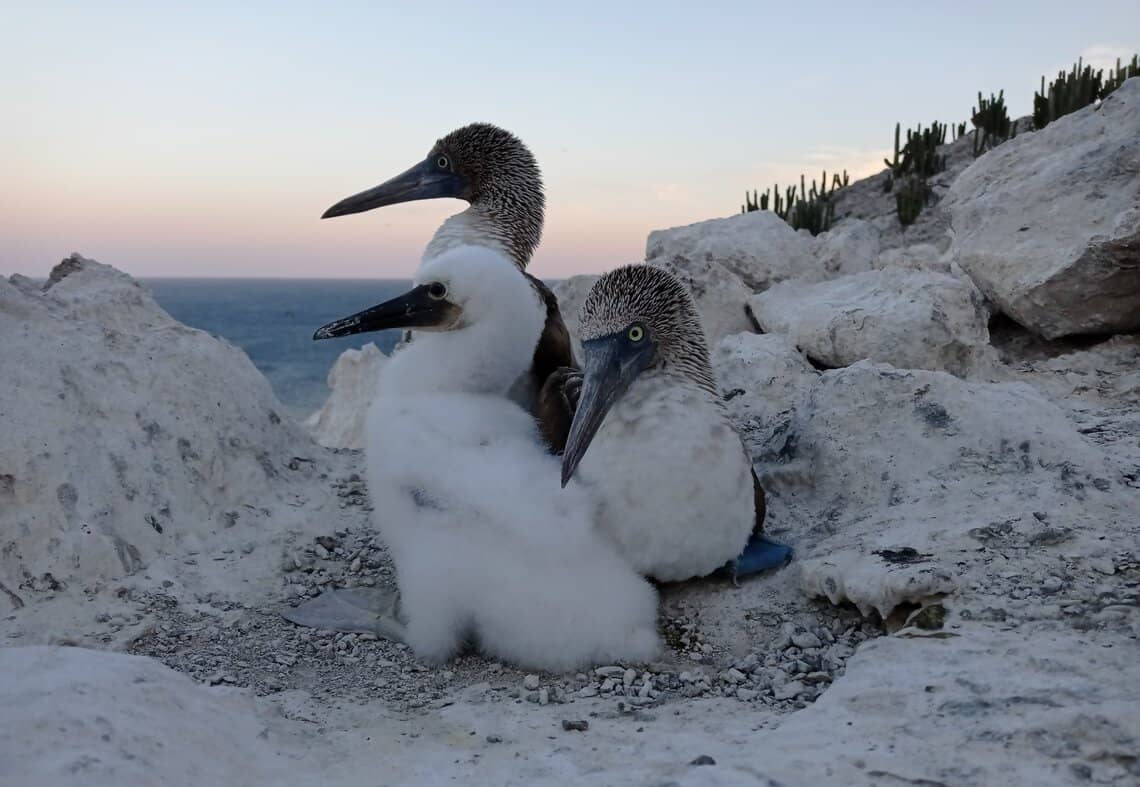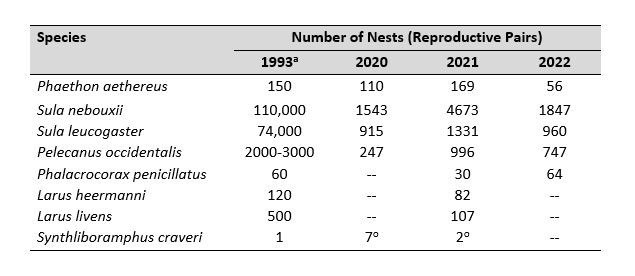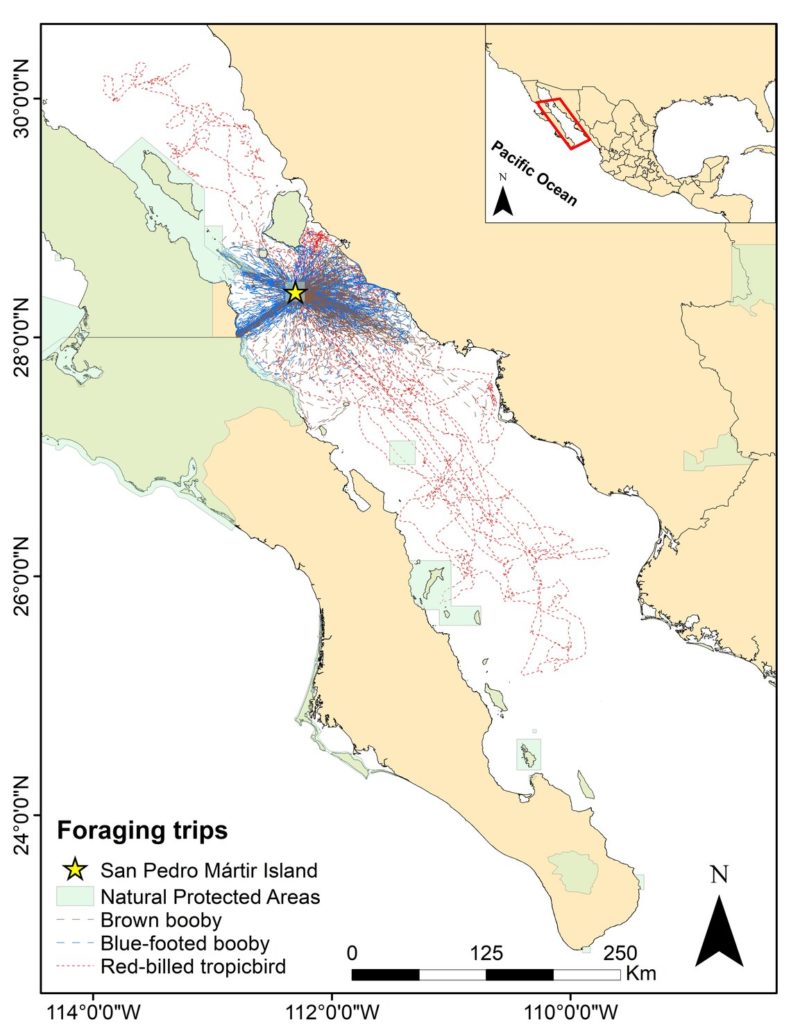By José Alfredo Castillo Guerrero, University of Guadalajara; Alberto Piña Ortiz, Justus Liebig University, and Jesús Ventura Trejo and Domingo de Jesús Zatarain González, National Commission of Natural Protected Areas
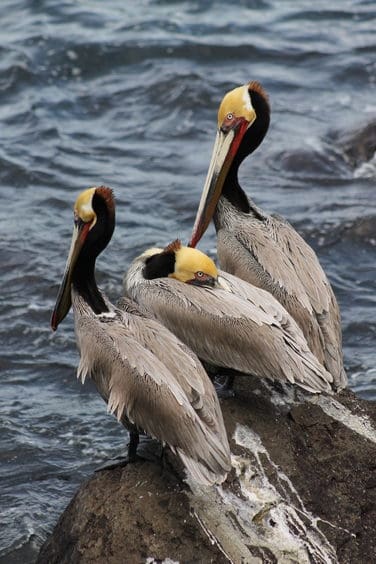
The San Pedro Mártir Island Biosphere Reserve is very important for seabird conservation in the Gulf of California. Eight species use the island for breeding, and the colonies of Blue-footed and Brown Boobies have been considered among the largest in the world (110,000 and 74,000 pairs, respectively). The population size of both species in the Gulf of California depends largely on the status of the colony on San Pedro Mártir Island.
Ecosystem conservation requires studies to assess changes in population status. In the case of San Pedro Mártir Island, estimates of seabird colony size were made between 1991-1993, highlighting its importance on a global and regional scale. However, no monitoring efforts of similar scope were carried out after those estimates.
Population Status
Between 2020 and 2022, through collaboration between CONANP, the University of Guadalajara, and with funding from the SJV Awards Program, we conducted an annual nest count. Although there were notable variations, the numbers of Blue-footed Boobies, Brown Boobies, and Brown Pelicans in recent years are only a small fraction of the historical estimate of colony size. It is difficult to determine the causes of colony size reduction in all three species. It may be directly or indirectly related to climate variability events (e.g., El Niño/climate change events) or from interactions with the industrial fishery for small pelagic fish (e.g., overfishing of prey) in unmanaged areas and outside of the natural protected area.
Table 1. Colony sizes of seabirds on San Pedro Mártir Island. Information obtained in different years is shown [ªData obtained from Tershy and Breese (1997). ºSearch performed only on Cravieri islet. – – = Not counted].
Identification of Priority Marine Areas
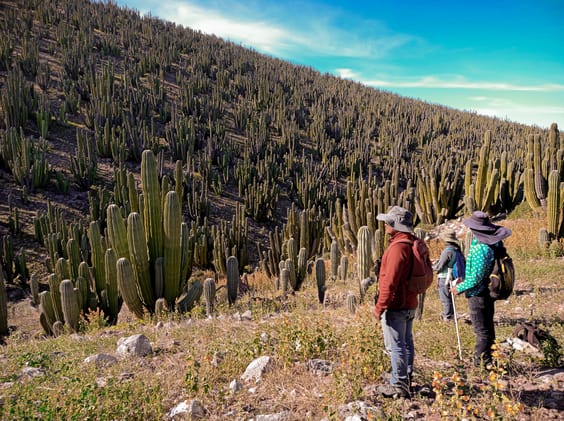
The protection and management of seabird colonies has been a very important tool for their conservation, but this protection scheme is sometimes insufficient, as there are also limitations and threats in marine areas, where birds obtain their food. In general, there has been an increase in threats to seabirds in marine areas when they have no protection or regulation. To counteract this global trend, the creation of marine reserve zones has been suggested to function as refuges to ensure the conservation of this highly vulnerable group. The main criterion for identifying and delimiting sites of high importance is based on the characterization of the birds’ foraging trips.
With this in mind, GPS devices were placed on the Blue-footed Booby, Brown Booby and Red-billed Tropicbird during 2021 and 2022. The boobies of San Pedro Mártir do not travel to specific areas, they use wide marine areas in a very dynamic way, searching for schools of sardines and anchovies. The trips of the Red-billed Tropicbirds were much longer (up to 9 days and up to 420 km from the island) and predominantly oriented towards the southern Gulf of California, searching for small squid, flying fish and mackerel. The set of trajectories obtained is being analyzed to identify the areas of greatest use and understand their dynamics.
Trajectories of seabirds from San Pedro Mártir Island during their foraging trips (map by José Alfredo Castillo Guerrero).
Once the important marine areas for birds are identified, their inclusion in a conservation and/or management scheme will be managed with the coordination and leadership of CONANP. It is evident that birds use large areas that are currently outside of the natural protected areas system, which implies an important challenge for the future. We hope that these actions will cement the conservation of seabirds on this amazing island for the long term.

